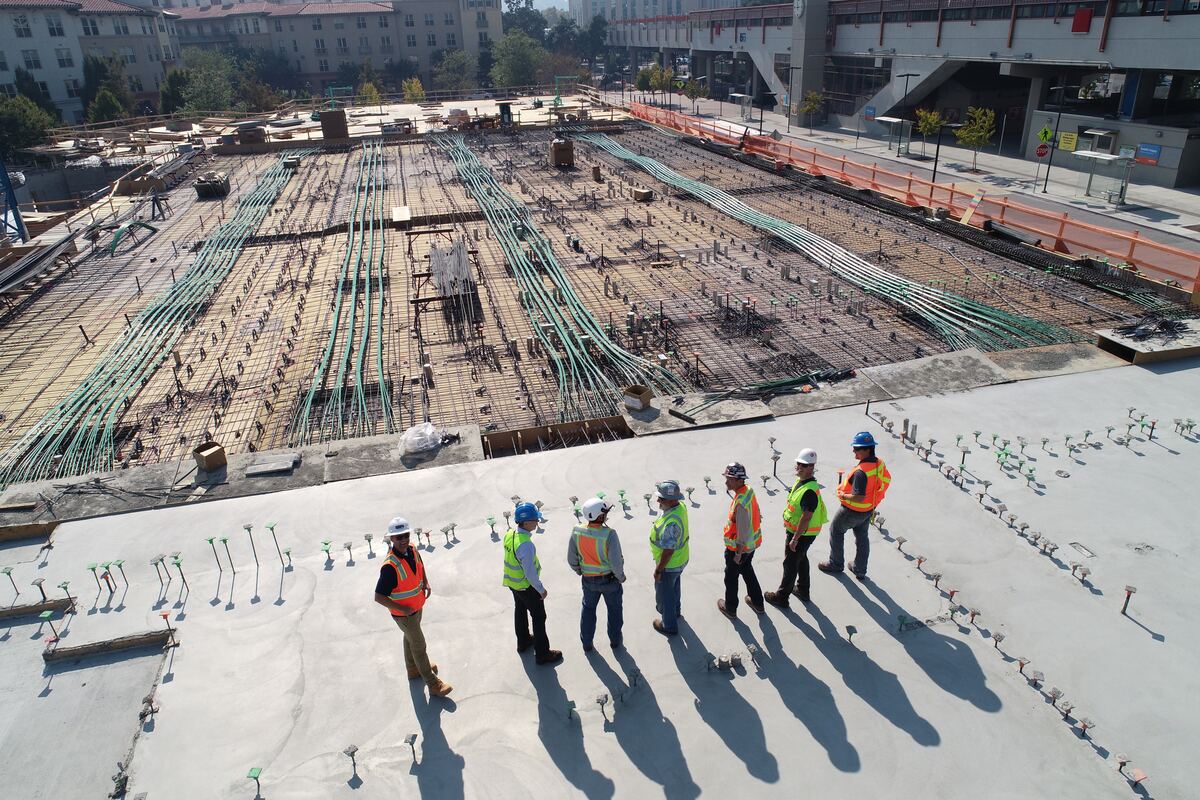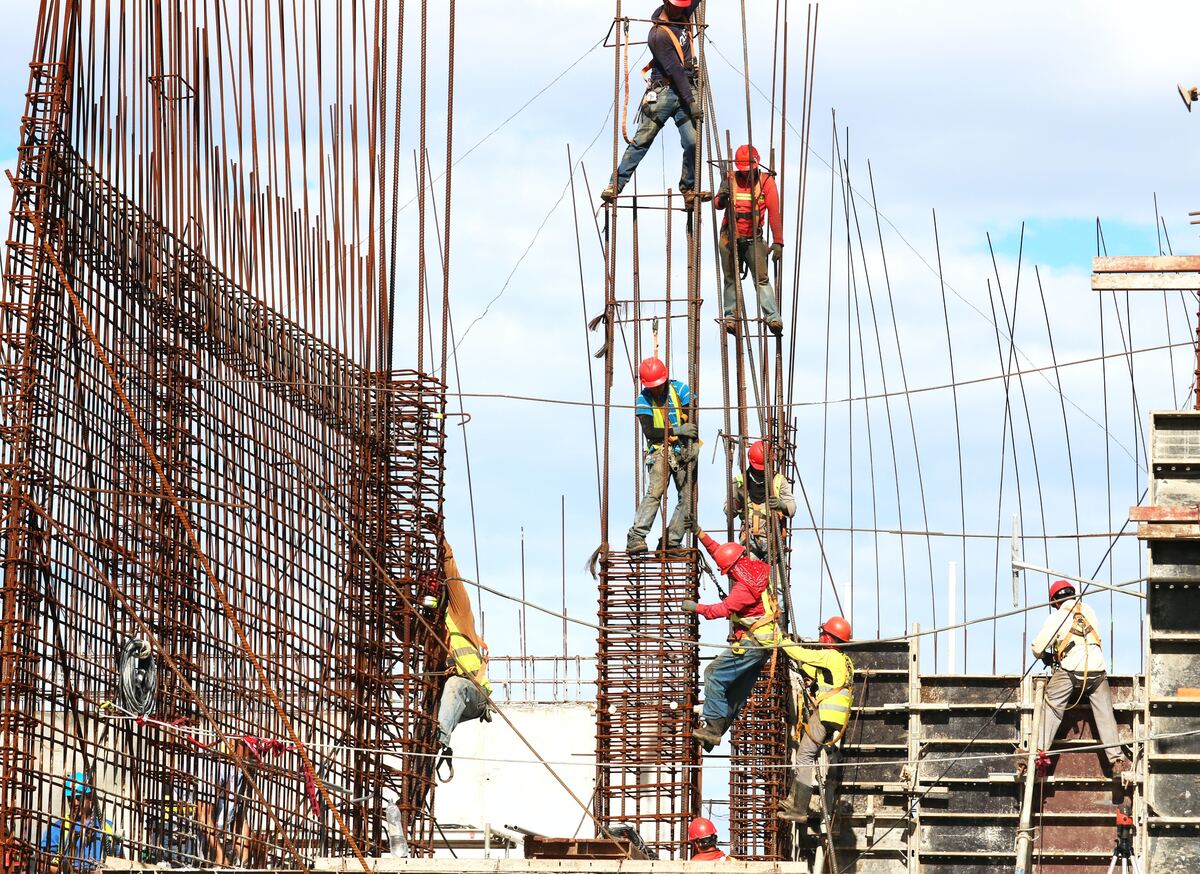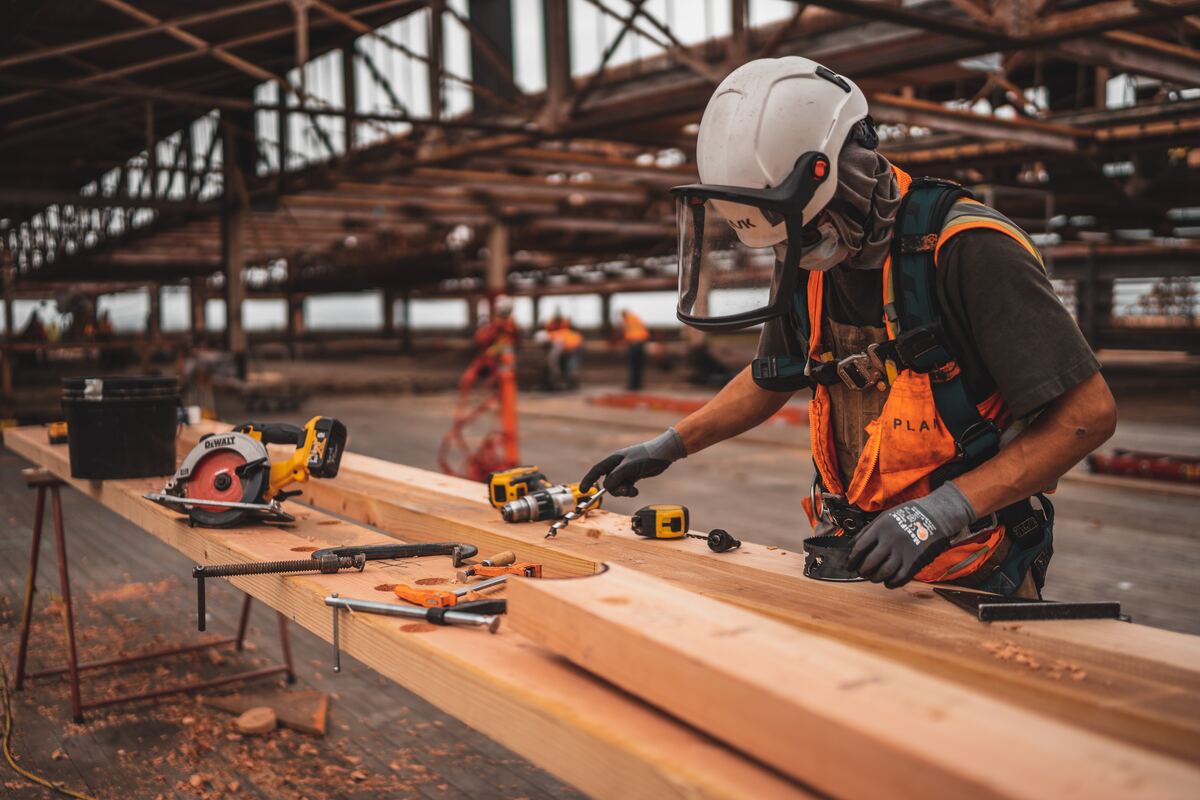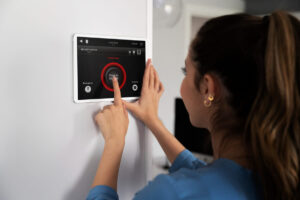Exclusive Neuroject Article: One idea has emerged as a game-changer in the constantly changing landscape of the construction sector, where innovation and technology play crucial roles in influencing how we build: the Common Data Environment (CDE). The construction industry is at a crossroads as 2024 approaches, where established procedures and advanced digital technologies are interacting. The industry’s flexibility and unwavering dedication to advancement are demonstrated by the transition from blueprints and hard hats to a digital ecosystem that connects stakeholders, data, and projects in real-time.
The Common Data Environment in construction is fundamentally different from other technology tools in that it embodies a fundamental shift in how we conceptualize, plan, and carry out building projects. In this article, we undertake a thorough investigation of the Common Data Environment in construction, tracing its history, breaking it down into its constituent parts, and revealing its enormous significance in contemporary construction practices. We’ll also look ahead to a time when collaboration, efficiency, and sustainability will be the norm in the construction sector when the CDE’s impact is expected to grow even stronger.
Table of Contents
Introduction to Common Data Environment in Construction
Being ahead of the curve is more important than ever in the constantly changing construction sector. The building industry is at the nexus of innovation and necessity as we approach the year 2024. The idea of a Common Data Environment (CDE) is the cornerstone of this transition.
A Common Data Environment in construction, or CDE, is an online ecosystem designed especially for the construction industry. It serves as the focal point for gathering, managing, and making available to authorized stakeholders all project-related data, information, and documentation over the course of the project.
The CDE collects information from a variety of sources, such as Building Information Modeling (BIM), project management tools, timetables, cost estimates, and more, and makes it easier for project participants to share information, collaborate effectively, and make well-informed decisions. Modern building projects are supported by a digital infrastructure that makes sure all parties involved are, both metaphorically and literally, on the same page.
The significance of Common Data Environment in construction in contemporary construction practices cannot be overstated. As projects grow in complexity and scale, the need for efficient information management and real-time collaboration becomes paramount. Common Data Environment in construction addresses these needs by enabling multidisciplinary teams, dispersed across geographical boundaries, to work cohesively with access to up-to-date project data. It streamlines processes, enhances communication, reduces errors, and ultimately leads to cost and time savings, while simultaneously improving project quality and accountability.
Additionally, there is increasing pressure on the construction sector to achieve sustainability targets, follow strict rules, and maintain safety. By offering a platform for data-driven decision-making and enabling the incorporation of sustainability and safety measures into the project’s DNA, Common Data Environment in construction equips construction professionals to meet these problems head-on.
The year 2024 looks to be crucial for the adoption and development of Common Data Environment in construction as we look ahead to the near future of construction. This article will explore the most recent CDE trends, innovations, and best practices while providing insightful information on how they might be used in practical building settings. We will examine the fundamental elements of the Common Data Environment in construction, its advantages, and its difficulties. Additionally, we will navigate the Common Data Environment in construction regulatory environment while preparing for its potential future effects on the construction industry.
We aim to provide construction professionals, from project managers to architects, with the knowledge and resources necessary to fully utilize this transformative technology. By doing this, we will ensure that they are ready to navigate the constantly shifting landscape of the construction industry in 2024 and beyond.

Evolution of CDE
A path from a fragmented, paper-based sector to one that welcomes digital transformation and collaboration can be seen in the Evolution of a Common Data Environment in Construction. To fully appreciate the significance of CDE in contemporary construction methods, it is essential to comprehend this evolution. In this article, we outline the crucial phases in the growth of the Common Data Environment in construction in the construction industry.
1. Emergence of Digital Documentation (1980s – 1990s)
In the past, the construction sector relied heavily on paper-based documentation, which led to information silos that impeded effective communication and teamwork. The emergence of computer-aided design (CAD) and later computer-aided facilities management (CAFM) in the 1980s marked the beginning of the shift towards digitalization. These innovations established the groundwork for digital documentation and represented the start of the development of a unified digital environment.
2. Adoption of Building Information Modeling (BIM) (2000s)
Building Information Modeling (BIM) is a concept that revolutionized the construction industry in the twenty-first century. The physical and functional qualities of a building were represented digitally in 3D via BIM. In addition to improving visualization, this strategy made it easier for project stakeholders to share data and work together. BIM demonstrated the promise of a centralized data repository for construction projects, serving as the forerunner of the present Common Data Environment in construction.
3. Transition to Integrated Project Delivery (IPD) (2010s)
Integrated project delivery (IPD), which prioritized cooperation and risk-sharing among project participants, underwent a change in the 2010s. IPD promoted the use of CDEs because they provide the infrastructure required to support integrated workflows. CDEs developed become information hubs for BIM data, project timetables, cost projections, and other vital project data.
4. Rise of Cloud-Based Solutions (2010s – Present)
The development of CDEs has been significantly influenced by developments in cloud technology. Cloud-based Common Data Environment in construction platforms facilitates cooperation amongst geographically distributed teams by enabling real-time access to project data from anywhere. The decision-making and management of construction projects have changed as a result of this accessibility and flexibility.
5. BIM Level 2 and Beyond (2010s – Present)
The government requirement for BIM Level 2 in 2016 in the United Kingdom was a major factor in encouraging the adoption of Common Data Environment in construction. To promote data sharing and information sharing among project participants, BIM Level 2 mandated the usage of a Common Data Environment in construction. CDEs were propelled into the mainstream of construction methods by this law.
6. Expansion Beyond BIM (2020s – Present)
CDEs have advanced beyond BIM-centric platforms in the last ten years. They now cover a wider range of data, such as documents, IoT data from construction sites, and project management data. This growth reflects the rising understanding that CDEs are crucial resources for integrated project management.
The development of a Common Data Environment in construction signifies a significant transition from manually intensive, solitary operations to collaborative, digitally integrated workflows. Technology developments, regulatory modifications, and a growing comprehension of the advantages of data consolidation and collaboration in building projects have all contributed to this transformation.
The role of CDEs in the construction industry is poised to grow as we advance in the digital era, allowing the sector to satisfy the rising expectations for efficiency, sustainability, and transparency.
Core Components of CDE
The Common Data Environment in construction emerges as the orchestrator that harmonizes the varied parties and data streams involved in a project in the complex dance of modern construction, where collaboration, communication, and coordination are important. At its core, CDE is made up of a number of interrelated parts that work together to establish the foundation for efficient information management and communication. This section looks into the core elements of CDE, illuminating both their unique value and overall significance.
1. Data Storage and Management
Any Common Data Environment in construction must have a reliable data management and storage system at its core. This part acts as the central location for all project-related data, including design documentation, engineering drawings, specifications, cost projections, timetables, and more. The risks connected with outdated or inconsistent data are decreased by this centralized data storage, which guarantees that stakeholders have access to the most recent and accurate information. A well-structured data storage system makes it simple to retrieve information and track revisions. Version control also makes it easier to make decisions and improves teamwork.
2. Document Control and Versioning:
Construction is a dynamic industry, and papers must be updated and revised frequently. Stakeholders can follow the development of project information thanks to document control and versioning in the Common Data Environment in construction, which maintains a thorough history of document modifications. This element reduces misunderstanding, avoids mistakes brought on by inaccurate information, and offers an audit trail for compliance and responsibility.
3. Collaboration Tools:
For project participants who are spread out geographically, CDE serves as a digital gathering place. Real-time engagement is facilitated through collaboration capabilities built into the environment, enabling stakeholders to work together on documents, discuss problems, and come to choices. Communication is streamlined and delays caused by conventional communication techniques are eliminated via features like comments, markups, and virtual meetings.
4. Access Control and Permissions:
Not every stakeholder in a complicated building project needs access to every piece of data. Only those with the proper authorization can access and edit particular data thanks to access control and permissions in Common Data Environment in construction. Based on the duties and responsibilities of the user, role-based permissions offer various levels of access. This element protects confidential data, upholds data integrity, and hinders unauthorized changes.
5. Integration with BIM and Other Systems:
Construction design and planning have been changed by building information modeling (BIM). BIM models, design data, and associated documentation may be exchanged thanks to CDE’s seamless integration with BIM systems. By bridging the gap between design and construction, this integration makes sure that the design objective is accurately reflected in the physical environment. In order to improve data interoperability and streamline project workflows, Common Data Environment in construction can also be connected to other project management systems.
6. Data Standards and Interoperability:
When project data is standardized and interoperable, Common Data Environment in construction functions efficiently. By following industry-wide data standards, it is possible to integrate data from many sources into the CDE without losing accuracy. This element lessens data silos, eliminates data translation errors, and promotes holistic decision-making.
The integration of these fundamental elements inside the Common Data Environment in construction promotes a cooperative setting where stakeholders can have access to, share, and work together on correct and current information. As a result, there is a significant decrease in project costs, errors, and delays while also improving stakeholder satisfaction and project quality.

Benefits of CDE Adoption
Adoption of a Common Data Environment (CDE) in the construction sector has a number of benefits that materially improve project productivity, teamwork, and overall project outcomes. We shall thoroughly examine these advantages in this section.
Improved Collaboration and Communication: No matter where they are located, Common Data Environment in construction promotes seamless collaboration among all project stakeholders. Architects, engineers, general contractors, and subcontractors may access, update, and share real-time project data on this single platform. Increased cooperation, fewer misunderstandings, and less expensive rework are all benefits of this better communication.
Enhanced Data Management: An essential component of a construction project’s success is effective data management. In order to ensure that project documentation, including drawings, specifications, and timelines, is structured and simple to access, Common Data Environment in construction streamlines data storage and retrieval. By doing this, the amount of time spent looking for information is cut down, as is the chance of employing stale information.
Cost Savings: CDE implementation has the potential to save a lot of money. The reduction of delays and errors—which can be expensive to fix—is achieved by enhancing teamwork and communication. Furthermore, Common Data Environment in construction makes it possible to better estimate costs and follow them throughout the project, reducing budget overruns and guaranteeing that resources are used effectively.
Time Efficiency: Time management is crucial in construction. Real-time access to project data provided by CDE speeds up decision-making. Timelines for projects are met or even shaved off as a result of accelerating approvals, modification orders, and issue resolution.
Quality Control: In building, upholding good standards is essential. Common Data Environment in construction makes sure that everyone involved in the project is using the most recent design and construction documents, lowering the possibility of mistakes and omissions. This enhances project quality and lowers the possibility of flaws.
Risk Mitigation: Early in a project’s lifecycle, CDE aids in risk identification and mitigation. By revealing possible problems through data analysis, it enables improved risk assessment and management. This proactive strategy reduces the possibility of expensive arguments and delays.
Sustainability Integration: Common Data Environment in construction makes it easier to incorporate sustainable practices into projects as they gain significance in the building industry. It enables the seamless integration of sustainability data and KPIs, assisting with the pursuit of environmental objectives and green building certifications.
Regulatory Compliance: Strict requirements apply to many construction projects. By offering a thorough audit trail of all project operations, CDE helps assure compliance. This supporting information is crucial for proving compliance with legal and regulatory standards.
The implementation of a Common Data Environment in the construction industry offers a wide range of advantages, from greater data management and cost savings to improved collaboration and regulatory compliance. CDE will become more and more essential to completing successful, effective, and sustainable projects as the construction industry develops.
Challenges and Solutions
Common Data Environments (CDEs) have unquestionably transformed the building sector since they were adopted. However, it is not without difficulties, just like any technological breakthrough. This section examines some of the major difficulties that construction industry experts have when putting CDEs into practice and offers workable answers to these problems.
Challenge 1: Data Security and Privacy
Solution: Implement Robust Data Security Measures
The sensitivity of project information makes data security a top priority in the construction industry. Modern cybersecurity measures need to be a priority for construction companies. To protect data, these precautions include encryption, access controls, and recurring security audits. In order to guarantee data privacy and compliance, it’s also essential to follow data protection laws like the General Data Protection Regulation (GDPR).
Challenge 2: Resistance to Change
Solution: Comprehensive Training and Change Management
Adoption of CDE can be hampered by resistance to change. Organizations should provide thorough training programs for staff members to solve this issue and ensure their familiarity with Common Data Environment in construction platforms. The shift can be facilitated by employing effective change management techniques, such as clearly communicating the advantages of adopting a Common Data Environment in construction.
Challenge 3: Integration with Legacy Systems
Solution: Middleware and APIs
Many construction firms use outdated systems that are difficult to integrate with contemporary CDEs. Application Programming Interfaces (APIs) and middleware solutions can close the gap. By enabling seamless data transfer between current systems and the Common Data Environment in construction, these technologies preserve past data while maximizing the potential of the new platform.
Challenge 4: Data Quality and Standardization
Solution: Data Governance and Standards
Data with inconsistent standards and poor quality might cause mistakes and misunderstandings. Establishing sound data governance procedures and enforcing data standards among all stakeholders are priorities for construction companies. The integrity of information within the Common Data Environment in construction can be maintained with the use of routine data quality checks and validation procedures.
Challenge 5: Cost of Implementation
Solution: Cost-Benefit Analysis and Scalability
Financial hardship may result from Common Data Environment in construction implementation, particularly for smaller construction firms. A thorough cost-benefit analysis is conducted to help support the investment. Furthermore, choosing scalable CDE solutions enables businesses to start small and progressively expand as their needs change.
Challenge 6: Access and Connectivity
Solution: Mobile and Cloud Solutions
Construction projects frequently take place in difficult or isolated locations with limited access to the Common Data Environment in construction. Even in faraway places, real-time access to project data is made possible via mobile applications and cloud-based solutions. This guarantees that employees who are on-site can remain connected and participate in the data flow of the Common Data Environment in construction.
Challenge 7: Stakeholder Collaboration
Solution: Clear Communication and Collaboration Tools
The effectiveness of a Common Data Environment in construction depends on effective stakeholder participation. Construction companies ought to spend money on collaborative solutions that easily work with the CDE. Clear communication guidelines and regular meetings can also promote a collaborative environment.
Challenge 8: Scalability and Future-Proofing
Solution: Choose Flexible CDE Solutions
Common Data Environment in construction specifications may alter as construction projects change. Therefore, it’s crucial to use CDE solutions that are adaptable to changing project requirements. This guarantees that the CDE will continue to be a valued asset in the long run.
Challenge 9: Data Ownership and Liability
Solution: Legal Contracts and Agreements
In a Common Data Environment in construction, determining data ownership and obligation can be difficult. These elements should be specifically outlined in legal contracts and agreements. Future issues can be avoided by hiring legal professionals to establish thorough contracts that include data ownership, usage, and liability.
Challenge 10: User Training and Skill Gaps
Solution: Continuous Learning and Support
Users should receive continuing training and assistance from construction companies. Making tools, user guides, and a helpful helpdesk available guarantees that staff members have the training and expertise needed to fully utilize the Common Data Environment in construction.
While there are difficulties in deploying Common Data Environments in the construction industry, each one offers a chance for advancement and innovation. Construction companies can successfully deploy CDEs by resolving issues with data security, change management, integration, data quality, cost, access, cooperation, scalability, legal considerations, and user training. The construction sector is in a better position for more efficiency, collaboration, and success in the dynamic environment of 2024 and beyond thanks to these solutions and a dedication to leveraging the revolutionary power of CDEs.

Regulatory Environment
Regulatory compliance is crucial for maintaining safety, quality, and environmental responsibility in the construction industry. As we enter 2024, the regulatory landscape is still changing as a result of a growing emphasis on sustainability, safety, and technological improvements. The regulatory environment in the construction sector is examined in this article, throwing light on the essential components and emerging trends that professionals need to be aware of to succeed in this fast-paced sector.
The Foundation of Regulatory Compliance
A complex system of laws and norms underlies the operation of the building industry. These cover a wide range, from regional building rules to global environmental treaties. Not only is adherence to these rules required by law, but it is also morally and ethically right. It guarantees worker and customer safety, safeguards the environment, and upholds public confidence.
Emerging Trends and Regulations
Sustainable building techniques have risen to the fore as the globe struggles with the repercussions of climate change. Regulations governing sustainability are expected to tighten even further in 2024. This includes requirements for energy-efficient structures, lower carbon emissions, and ethical material sourcing. For construction companies looking to remain competitive, keeping up with these changing standards will be crucial.
Additionally, safety rules are always changing to improve the well-being of construction employees. Technology advancements like wearables and automation are being incorporated to boost construction site safety. In addition to protecting workers, adherence to these changing safety requirements reduces project delays and liability.
Data Protection and Privacy
The construction sector is becoming more and more dependent on data because of the integration of technologies like Building Information Modeling (BIM) and Common Data Environments (CDEs). Due to this, data protection and privacy laws are receiving more attention, notably the GDPR in Europe and other laws of a similar nature around the world. These rules must be followed by construction companies to guarantee the secure handling of sensitive project data.
The Role of Government Agencies
Governmental organizations are essential in setting building regulations. These organizations are in charge of creating, putting into effect and upholding codes and standards. Expect governments to keep working with stakeholders in the industry in 2024 to adapt rules to evolving requirements and technologies.
The regulatory landscape in the construction industry is changing, impacted by new trends and societal requirements. For those in the construction industry, staying aware and compliant with these rules is not only a legal duty but also a strategic need. The construction sector can continue to advance sustainability, safety, and innovation by being aware of and proactively adjusting to the changing regulatory environment.
CDE in 2024
The construction sector is leading the way in technological change as we go into 2024, and the Common Data Environment (CDE) is assuming a prominent role as a key enabler of improved cooperation and project management. CDE, which has already transformed construction techniques, is still developing, opening up new opportunities for reducing processes, boosting effectiveness, and encouraging collaboration across disciplines.
1. Technological Integration and Interoperability
The Common Data Environment in construction is expected to have a stronger integration of technologies that enable fluid communication in 2024. Building information modeling (BIM) and geographic information systems (GIS) integration inside CDEs enables project stakeholders to contextualize design data within topographical and geographic contexts in addition to visualizing it. By giving decision-makers a thorough understanding of project components and their practical effects, this integration improves decision-making.
2. Data-Driven Insights and Predictive Analytics
Data-driven insight centers are becoming CDEs. CDEs can use machine learning (ML) and artificial intelligence (AI) to forecast prospective problems and offer mitigation measures by analyzing prior project data. By enabling proactive decision-making, these predictive analytics help to improve project results by avoiding delays and cost overruns.
3. Remote Collaboration and Virtual Reality (VR)
The adoption of remote work and collaboration solutions has surged due to the difficulties presented by international events. Geographically scattered teams will be able to collaborate more effectively in 2024 thanks to CDEs’ predicted improved remote collaboration features. Additionally, stakeholders can virtually immerse themselves in project surroundings thanks to the incorporation of Virtual Reality (VR) into CDEs, which helps with design review, issue detection, and stakeholder engagement.
4. Enhanced Security and Compliance
CDEs are strengthening their security protocols as worries about data security spread. Sensitive project data is protected by advanced encryption, authentication procedures, and secure access restrictions, which are becoming typical features. Additionally, Common Data Environment in construction ensures compliance with data protection and privacy laws by responding to changing regulatory environments.
5. Sustainability Integration
CDEs are prepared to incorporate sustainability measures into project data in 2024 in accordance with global sustainability targets. This promotes environmentally friendly construction methods and enables stakeholders to evaluate and optimize sustainability performance throughout the project lifecycle.
The development of Common Data Environments in the construction sector will reach a turning point in 2024. CDEs are ready to take construction techniques to new levels of excellence and efficiency because of improved technological integration, data-driven insights, remote collaboration capabilities, and an uncompromising focus on security and sustainability. CDEs serve as essential tools for navigating the challenging landscape of contemporary construction as the sector continues to adjust to shifting needs.

Implementation and Adoption Strategies
A Common Data Environment’s (CDE) integration into building projects depends on thoughtful adoption and implementation strategies. Although Common Data Environment in construction has great promise, its successful implementation necessitates careful planning, change management, and a thorough comprehension of the unique requirements and difficulties faced by the construction organization. We will examine important implementation and adoption techniques for CDE in the construction sector in this part.
1. Develop a Clear Implementation Roadmap
A successful Common Data Environment in construction deployment is built on a clearly defined implementation roadmap. The project’s goals, deadlines, milestones, and accountable parties should all be listed in this plan. In order to determine the areas where CDE integration will have the biggest impact, it should also take into account the organization’s current technologies and operations.
2. Comprehensive Training and Education
To guarantee that all project stakeholders, from project managers to field personnel, are adept at using the Common Data Environment in construction platform, education and training are crucial. This entails educating teams on software user interfaces and data entry and retrieval procedures. Continuous training opportunities can aid in filling in knowledge gaps and promoting CDE adoption.
3. Engage Stakeholders from Inception
Include important parties from the beginning of the project in the execution of CDE. This covers designers, engineers, builders, and suppliers. Collaborative involvement makes ensuring that the CDE fits each participant’s specific needs and preferences, resulting in easier integration and greater acceptance rates.
4. Foster a Culture of Collaboration
Implementing Common Data Environment in construction includes more than just using technology; it also entails encouraging a culture of cooperation among project participants. Encourage open dialogue, information exchange, and group decision-making. To encourage teams to adopt the platform, emphasize the advantages of CDE, such as enhanced information exchange and decreased rework.
5. Data Management and Governance
To preserve data security and integrity within the Common Data Environment in construction, establish strong data management and governance processes. Define data exchange methods, access restrictions, and data ownership. For sensitive project information to be handled in a responsible manner, compliance with data protection laws is essential.
6. Address Change Management
Experts in the construction industry may be resistant to change, especially when it means implementing new technologies. Implement change management tactics to overcome resistance. To promote a favorable attitude toward the technology, clearly communicate the advantages of the Common Data Environment in construction, offer ongoing support, and recognize and honor early adopters.
7. Monitor and Iterate
Keep an eye on the Common Data Environment in construction implementation’s performance on a regular basis. To gauge its impact on the effectiveness and outcomes of the project, collect user input and monitor key performance indicators. Utilize this information to modify and enhance the system and its operations as needed.
8. Scalability and Flexibility
Think about the Common Data Environment in construction platform’s versatility and scalability. The CDE should be flexible enough to meet a variety of project requirements because construction projects range in size and complexity. Make sure the platform can expand along with the business and integrate new technology.
Careful preparation, teamwork, and a dedication to change management are required for the effective adoption and implementation of a Common Data Environment in the construction industry. By implementing these tactics, construction organizations may fully utilize Common Data Environment in construction, increasing project effectiveness, teamwork, and overall success.
Future Outlook
Common Data Environments (CDEs) have a transformational and vibrant future in the construction sector. Several important outlooks emerge as we predict the trends and developments that will influence CDE usage in the years after 2024, highlighting the CDEs’ ongoing significance and development:
1. Integration with Advanced Technologies
Modern technologies like machine learning and artificial intelligence (AI) are expected to work effortlessly with CDEs. Predictive analytics will be made available by CDEs thanks to these integrations, which will enhance decision-making, risk management, and project planning. The efficiency of building projects can be further increased by using AI-driven algorithms to help with anomaly identification and resource allocation optimization.
2. Enhanced Interoperability
The interoperability of diverse software tools and platforms in the construction sector is increasing. By serving as data hubs and facilitating the interchange of information across various stakeholders and software applications, CDEs will be essential to reaching this goal. Collaboration will be easier as a result, and there will be fewer data silos.
3. Sustainability and Environmental Considerations
The importance of sustainability in construction projects is rising. Environmental data will be included in CDEs as they develop, empowering project teams to make eco-friendly choices. This entails monitoring the carbon footprint of building materials, maximizing energy use in structures, and abiding by environmental laws.
4. Cybersecurity and Data Protection
Common Data environments in construction will encounter more difficult cybersecurity concerns as a result of the increasing reliance on digital data. The integrity and confidentiality of project data will be guaranteed by future CDEs, who will place a high priority on effective data security measures to guard against cyber threats.
5. Expansion Beyond Construction
The operation and maintenance phases of structures and infrastructure may be covered by Common Data Environment in construction ideas in addition to traditional construction. In this evolution, referred to as the “digital twin” notion, a structure’s full lifecycle is represented digitally. This extended lifecycle management will be supported by CDEs, resulting in increased asset performance and more effective building maintenance.
6. Mobile and Remote Access
It’s likely that the trend of mobile and remote work will continue. Future Common Data Environment in construction will place a high priority on mobile usability, enabling project stakeholders to access crucial project data and engage from any location, improving flexibility and adaptability in project management.
7. Regulations and Compliance
Regulations governing data security and privacy are anticipated to change. Common Data Environment in construction operations will become even more difficult as a result of the requirement to adjust to these developments and assure adherence to both new and old rules.
CDEs in the construction industry have a bright future thanks to ongoing innovation and adaptation. These digital ecosystems will continue to be crucial tools for effectively managing building projects, encouraging collaboration, and solving new difficulties. Professionals in the construction industry who adopt these trends and technology will be well-positioned to prosper in a sector that is always changing.

Conclusion
The Common Data Environment (CDE) is an example of transformation and efficiency in the quickly changing field of construction, and its importance will continue to grow. One thing has been clearly evident as we have traveled through the many elements of CDE, from its beginning to its current importance, and as we have examined its complex function in construction practices: Common Data Environment in construction is not just a tool; it is the foundation upon which modern construction is built.
CDEs are positioned for ongoing innovation and integration with cutting-edge technology in the future, offering improved interoperability, sustainability, and cybersecurity. Additionally, by extending Common Data Environment in construction principles throughout the stages of structural operation and maintenance, it is ensured that its effects will be seen for the duration of a building or piece of infrastructure’s whole existence.
Common Data Environment in construction provides the crucial link for construction professionals to cross in a world where remote work and digital transformation are the norm. Construction stakeholders may improve communication, streamline procedures, and make data-driven decisions by adopting Common Data Environment in construction, which will ultimately result in more effective and sustainable projects.
The torchbearers of advancement will be those who understand the power of the Common Data Environment in construction and adjust to these changing trends as the construction industry forges its future, guiding the industry toward a future characterized by smarter, more efficient, and more sustainable projects. Although CDEs will still be relevant in 2024, their continued significance is the best indicator of how transformational they can be in the coming years.
Suggested article for reading:
Supply Chain Management in Construction
Digital Twin Technology in Construction & Building
Resources:
Royal Institution of Chartered Surveyors (RICS) | European Union | ORACLE | Trimble Construction | The NBS | Digital Builder | pbctoday
For all the pictures: Unsplash





